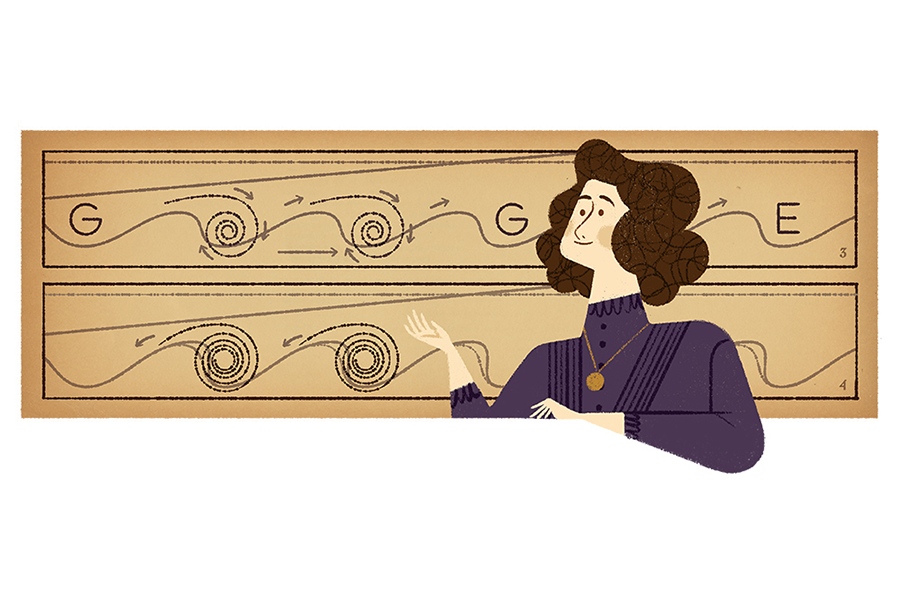How Hertha Marks Ayrton made ripples in math and women's rights
Loading...
The name Hertha Marks Ayrton doesn't appear in many history text books. But the turn-of-the-century scientist and mathematician was a a pioneer of her time.
She was a scientist, mathematician, engineer, and inventor, at a time when society barred women from having agency.
Ms. Ayrton – the star of Thursday's Google Doodle – was born Phoebe Sarah Marks in England in 1854, to a watchmaker and a seamstress. She got the name "Hertha" from a childhood friend, according to the Jewish Women's Archive encyclopedia. In 1874, she passed the Cambridge University Local Examinations with honors in English and mathematics, and began studying at Girton College, the first university college for women, with financial assistance from Barbara Bodichon, one of its founders.
Ayrton placed third at Girton, but her mathematical and scientific career was only beginning. While a student at the university, she invented a line divider that could divide a line into equal parts. In 1884, she met Will Ayrton, a professor of electrical engineering and physics while attending his evening classes, and later married him. Hertha worked with her husband on his research into electric arcs, which were used to produce bright light. She also became involved in the early suffrage movement.
In 1893 Ayrton discovered that the length of an electric arc was connected to pressure and voltage. This early theory was published in "The Electrician" in 1895, and she was the first woman to be invited to read a paper at a meeting of The Institution of Electrical Engineers in 1899. She was also the first woman to be elected to membership in, and receive a prize from, that organization.
Her observations about the formation of sand ripples at the water's edge has left a lasting impression on today's understanding of physics.
In 1902, Ayrton was nominated to be a Fellow of the Royal Society of London, the first woman to receive this distinction. Because she was married, however, she was not allowed to formally receive the honor. Women would not officially be admitted into the society until twenty years after Hertha's death in 1923.
Ayrton was also a close friend of Marie Curie, famous for her work on radioactivity. Ayrton worked on making sure Curie's discovery of radium was rightfully understood after the media wrongfully attributed the discovery to her husband Pierre.
In her later years, Ayrton became vocal in the British sufferage movement, attending rallies and serving as vice president of the National Union of Women's Suffrages Societies.
Ayrton continued to file patents on her discoveries and inventions until her death in 1923. This protection of intellectual property was a vital distinction at a time when women's intellectual labor could easily be overlooked or misattributed, especially if they were married to a well-known thinker, as Ayrton was. Her patents included work in electricity, mathematics, and air propulsion.






